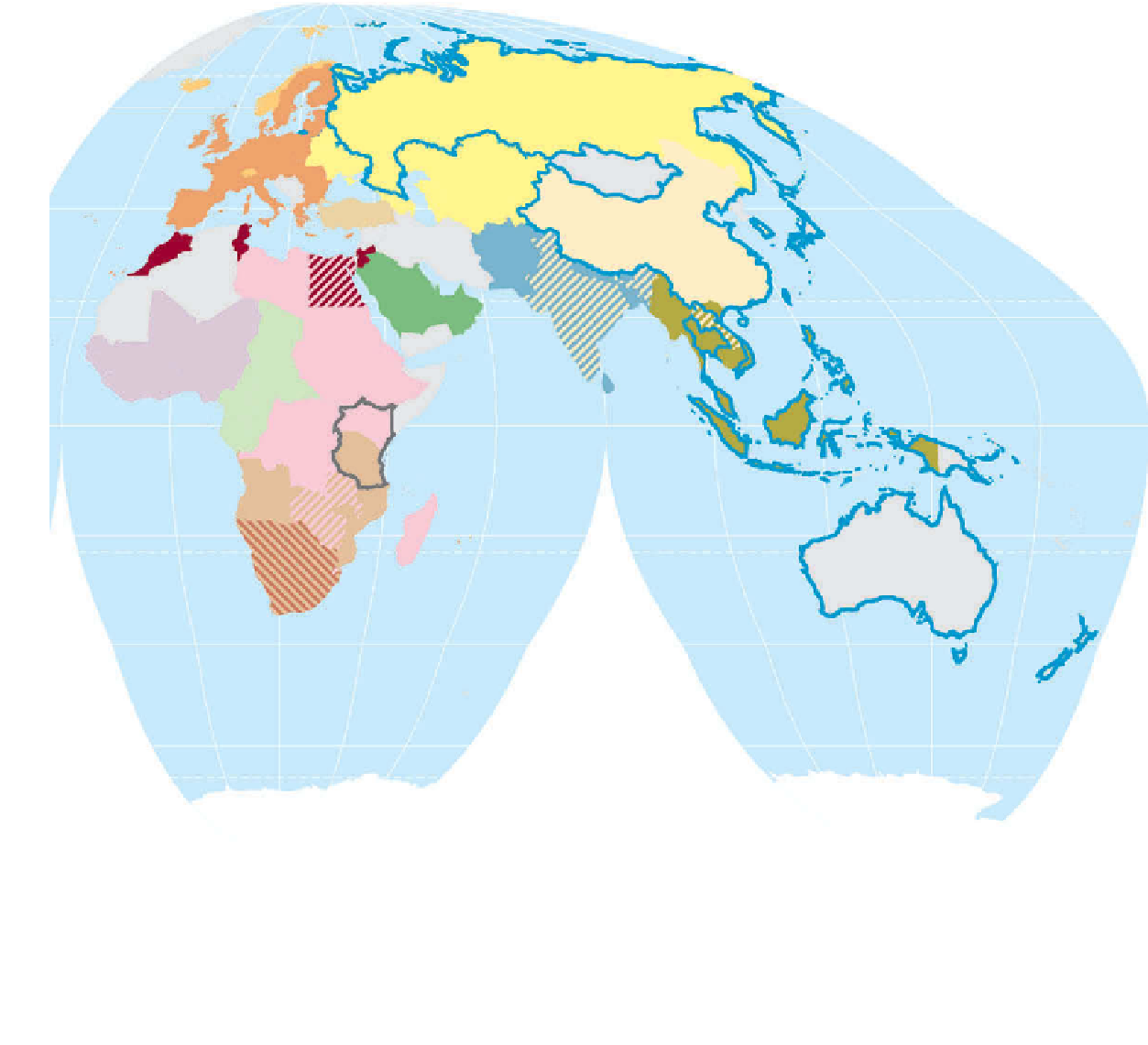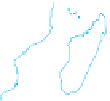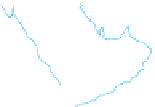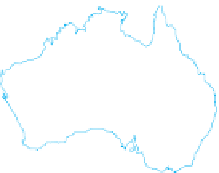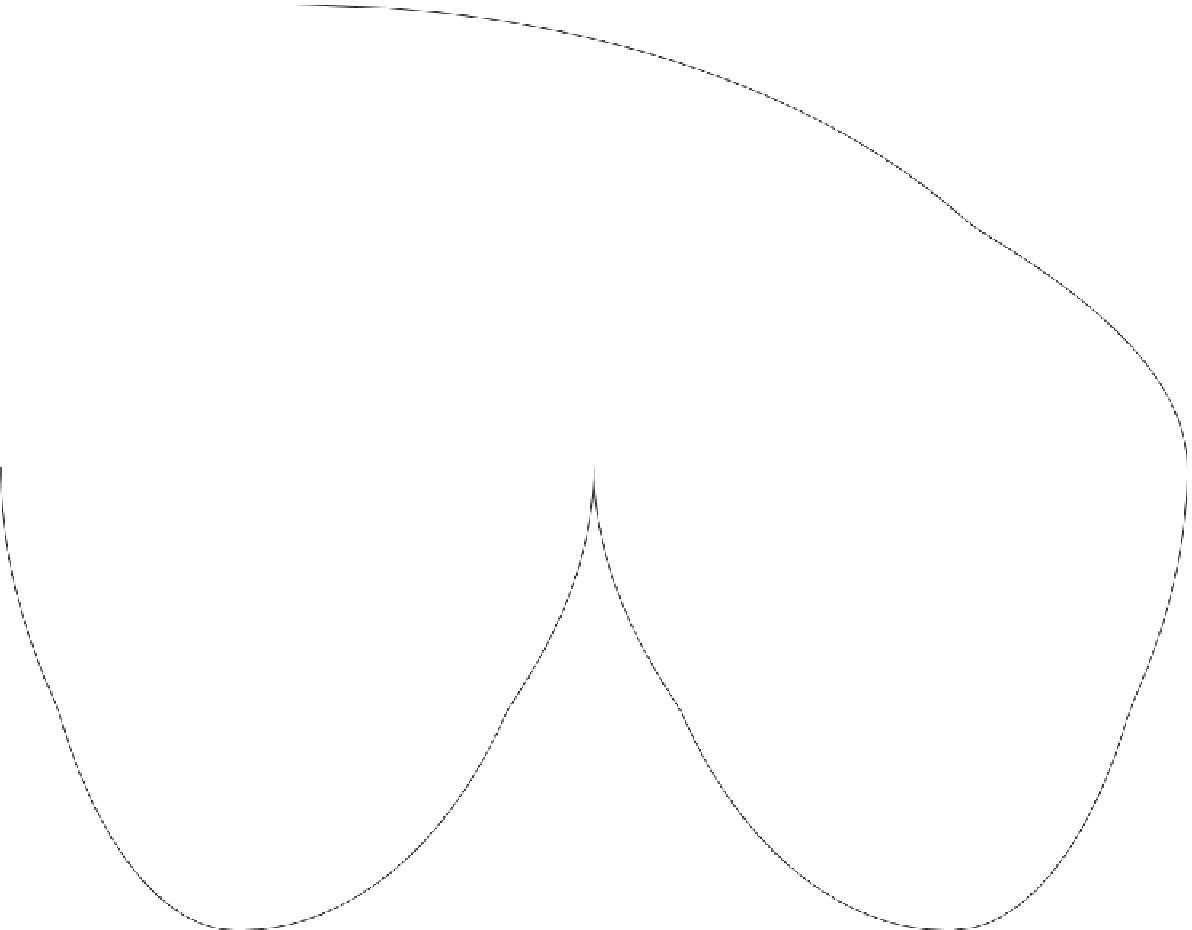Geography Reference
In-Depth Information
initiated a program of cooperation and unifi cation that
led to the formal establishment of a European Union
(EU) in 1992. In the mid-1990s, Austria, Sweden, and
Finland joined the EU, bringing the total number of
members to 15 (Fig. 8.24).
In the late 1990s, the EU began preparing for the
establishment of a single currency—the euro (Fig. 8.25).
First, all electronic fi nancial transactions were denomi-
nated in euros, and on January 1, 2002, the EU introduced
euro coins and notes. Not all EU member states are cur-
rently a part of the euro-zone, but the euro has emerged as
a signifi cant global currency.
The integration of ten eastern European and Mediter-
ranean island states into the European Union in 2004, and
two more in 2007, is a signifi cant development. Integration
is a diffi cult process and often requires painful adjustments
because of the diversity of the states involved. For example,
agricultural practices and policies have always varied widely.
Yet some general policy must govern agriculture through-
out the European Union. Individual states have found these
adjustments diffi cult at times, and the EU has had to devise
policies to accommodate regional contrasts and delays in
implementation. In addition, integration requires signifi cant
expenditures. Under the rules of the EU, the richer coun-
tries must subsidize (provide fi nancial support to) the poorer
ones; therefore, the entry of eastern European states adds to
the fi nancial burden on the wealthier western and northern
European members. Recent fi nancial crises in Greece and
Ireland have put the union under unprecedented pressure,
as wealthier countries such as Germany question why they
should foot the bill for countries that have not (at least in
German eyes) managed their fi nances responsibly.
GREENLAND
Arctic Circle
FINLAND
ICELAND
N
O
RWAY
RUSSIA
ESTONIA
LITHUANIA
60
°
60
°
SWEDEN
LATVIA
UNITED KINGDOM
DENMAR
K
NETH.
IRELAND
BELARUS
UKRAINE
POLAND
GER.
MOLDOVA
BELG.
ATLANTIC
OCEAN
KAZAKHSTAN
AUS.
SWITZ.
HUNG.
MONGOLIA
FRANCE
ROM.
BULG.
GEORGIA
ARMENIA
AZERBAIJAN
N.
KOREA
UZBEKISTAN
KYRGYZSTAN
TAJIKISTAN
SPAIN
PORTUGAL
40
°
40
°
ITALY
JAPAN
TURKEY
TURKMENISTAN
GREECE
CHINA
S.
KOREA
ALBANIA
SYRIA
TUNISIA
CYPRUS
AFGHANISTAN
MOROCCO
IRAN
PACIFIC
IRAQ
LEBANON
JORDAN
BHUTAN
ISRAEL
PAKISTAN
NEPAL
ALGERIA
KUWAIT
LIBYA
BAHRAIN
WESTERN
SAHARA
EGYPT
QATAR
BANGLADESH
TAIWAN
Tropic of Cancer
U.A.E.
SAUDI
ARABIA
MYANMAR
20
°
INDIA
MAURITANIA
LAOS
OMAN
OCEAN
MALI
NIGER
SUDAN
VIETNAM
THAILAND
CAMBODIA
CHAD
SENE
G
AL
GAMBIA
GUINEA-
BISSAU
GUINEA
SIERRA
LEONE
LIBERIA
ERITREA
PHILIPPINES
YEMEN
BURKINA
FASO
DJIBOUTI
NIGERIA
SRI LANKA
IVORY
COAST
CENTRAL
AFRICAN REP.
SOUTH
SUDAN
ETHIOPIA
BRUNEI
CAMEROON
SOMALIA
INDIAN
TOGO
BENIN
MALAYSIA
GHANA
UGANDA
KENYA
Equator
0
°
CONGO
RWANDA
SINGAPORE
GABON
PAPUA
NEW
GUINEA
EQUATORIAL
GUINEA
THE
CONGO
OCEAN
BURUNDI
I
NDONESI
A
TANZANIA
COMOROS
ATLANTIC
EAST
TIMOR
ANGOLA
ZAMBIA
MALAWI
MOÇAMBIQUE
FIJI
VANUATU
MADAGASCAR
ZIMBABWE
BOTSWANA
20
°
20
°
20
°
20
°
NAMIBIA
MAURITIUS
NEW
CALEDONIA
Tropic of Capricorn
AUSTRALIA
OCEAN
SWAZILAND
SOUTH
AFRICA
LESOTHO
NEW
ZEALAND
40
°
40
°
40
°
0
°
20
°
40
°
60
°
100
°
120
°
140
°
160
°
60
°
60
°
60
°
60
°
SOUTHERN
OCEAN
Antarctic Circle

